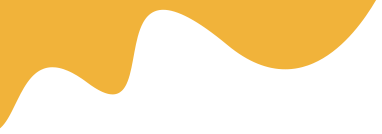


Direct-to-Film (DTF) printing already offers vibrant, durable results on various fabrics, but what if you could take it a step further? Adding special effects like glitter, foil, and other enhancements can transform your designs into standout pieces that captivate. Whether you're customizing apparel for fashion, events, or merchandise, these effects add texture, shine, and uniqueness. In this article, we'll explore how to incorporate these elements into your DTF process, making it accessible even for beginners.
Incorporating special effects elevates ordinary prints to premium, high-value items. Glitter provides a sparkling texture, foil adds metallic sheen, and other effects like puff or glow-in-the-dark can create dynamic visuals. These additions not only enhance aesthetics but also increase market appeal, allowing you to charge more for customized products. Best of all, they integrate seamlessly with the standard DTF workflow, requiring minimal extra equipment.
Before diving in, it's essential to grasp how these effects work with DTF. In traditional DTF, you print on PET film using CMYK and white inks, apply adhesive powder, cure it, and heat-press onto fabric. Special effects often involve additional layers or materials applied during or after this process. For instance, glitter might be mixed into the adhesive, while foil requires a separate pressing step. Always ensure compatibility with your DTF inks and films to avoid issues like peeling or fading.
These materials are widely available from printing suppliers and are affordable for small-scale operations.
Glitter is one of the most popular effects, giving designs a textured, eye-catching sparkle. It's perfect for logos, party wear, or kids' apparel.
Tips: Use anti-static glitter to prevent clumping. Test on scrap fabric to perfect the sparkle intensity. Glitter DTF prints are washable but avoid high-heat drying to maintain longevity.
Foil adds a luxurious metallic finish, mimicking gold or silver without expensive materials. It's ideal for branding or elegant designs.
Tips: Experiment with holographic foils for added flair. Ensure even pressure during pressing to avoid patchy results. Foil effects are durable but may require gentler washing.
Beyond glitter and foil, DTF allows for creative enhancements like puff, metallic, and glow effects.
Puff creates a raised, 3D texture. Mix puff powder into your adhesive or apply it separately before curing. During heat pressing, it expands for a embossed look. Great for text or patterns on hoodies.
Use metallic inks or powders for a subtle shine. Print with metallic DTF inks if your printer supports them, or layer metallic film similar to foil.
Incorporate phosphorescent powders for designs that glow. Apply after printing and before adhesive. These are fun for nightwear or promotional items.
For all effects, safety is key—use ventilated spaces and follow material guidelines.
To achieve professional results:
Common issues include uneven application (fix by shaking powder evenly) or fading (use quality materials). With practice, you'll master these enhancements.
Adding special effects to DTF designs opens up endless possibilities for creativity and business growth. From glitter's sparkle to foil's elegance, these techniques are straightforward to implement and can set your prints apart. Start small, experiment, and watch your custom apparel shine. If you're new to DTF, build on basic processes before advancing to these effects for the best results.
(Word count: 950)
Use anti-static glitter powder and apply it evenly over wet ink while shaking off excess; ensure your workspace is dry to avoid moisture-related clumping.
Read MoreYes, layer them by applying glitter first, curing lightly, then adding foil in separate areas for a multi-effect design, but test compatibility to ensure adhesion.
Read MoreApply puff powder and cure at 150-160°C, then heat press at 160°C for 10-15 seconds to allow expansion without burning the fabric.
Read MoreMost are durable and washable on gentle cycles with cold water, but avoid high heat or bleach to preserve the effects like glitter or foil.
Read MoreUse programs like Adobe Photoshop or CorelDRAW to create layered designs, specifying areas for effects to ensure precise application during printing.
Read More
